If you’re diving into the world of turtles, understanding their temperature needs is key. These cold-blooded creatures rely on external warmth to keep their bodies functioning right. From setting up the perfect basking spot to picking the right heat lamp, it’s all about creating a cozy environment. And don’t forget about the water! Keeping it at the right temperature is just as crucial. So, let’s explore how to make sure your shelled friend stays comfy and healthy.
Understanding Turtle Temperature Needs
The Role of Temperature in Turtle Health
Turtles, being ectothermic, rely heavily on their surroundings to control their body heat. This means their health and activity levels are closely tied to the temperature of their environment. If it’s too cold, turtles can become lethargic and might struggle with digestion. This can lead to health problems like respiratory infections. On the flip side, if it gets too hot, they might face dehydration or heat stress, which can be just as dangerous.
How Turtles Regulate Their Body Temperature
Turtles have a nifty way of managing their body temperature—they move between warmer and cooler areas within their habitat. This behavior, known as thermoregulation, allows them to maintain a stable internal temperature. Providing a range of temperatures within their environment is crucial. A warm basking spot and a cooler area give turtles the choice to move as they need, ensuring they stay comfortable and healthy.
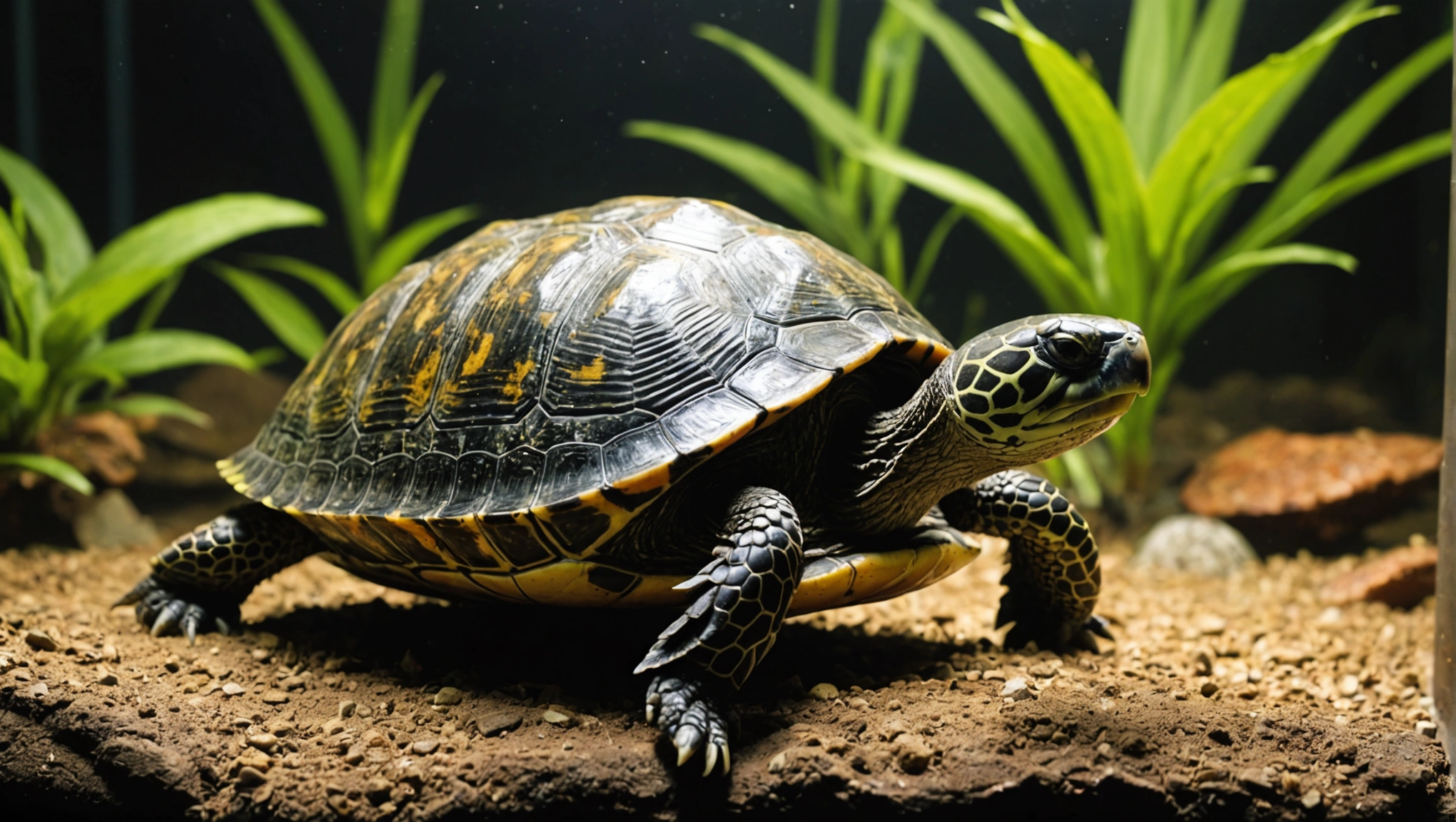
Common Temperature Requirements for Different Turtle Species
Different turtle species have unique temperature preferences. Generally, aquatic turtles like a water temperature of 75-85°F, while terrestrial turtles enjoy a basking spot around 85-95°F. Here’s a quick rundown:
- Aquatic Turtles: Need water temperatures between 75-85°F.
- Terrestrial Turtles: Prefer basking areas at 85-95°F.
- Box Turtles: Thrive in ambient temperatures of 70-80°F with a basking spot of 85-90°F.
It’s important to research the specific needs of your turtle species to ensure their habitat is just right. Providing the right temperature range helps keep your turtle active and healthy.
Maintaining proper humidity is crucial for turtle health, as it mimics their natural environment. Different species have varying humidity needs; box turtles thrive at 60-90%, while desert turtles require minimal moisture. Seasonal changes may necessitate adjustments in humidity levels. Signs of inadequate humidity include dry skin and lethargy. To create an ideal habitat, choose the right enclosure, incorporate water features, and monitor humidity with hygrometers. Excess humidity can lead to mold and respiratory issues, so proper ventilation and regular cleaning are essential.
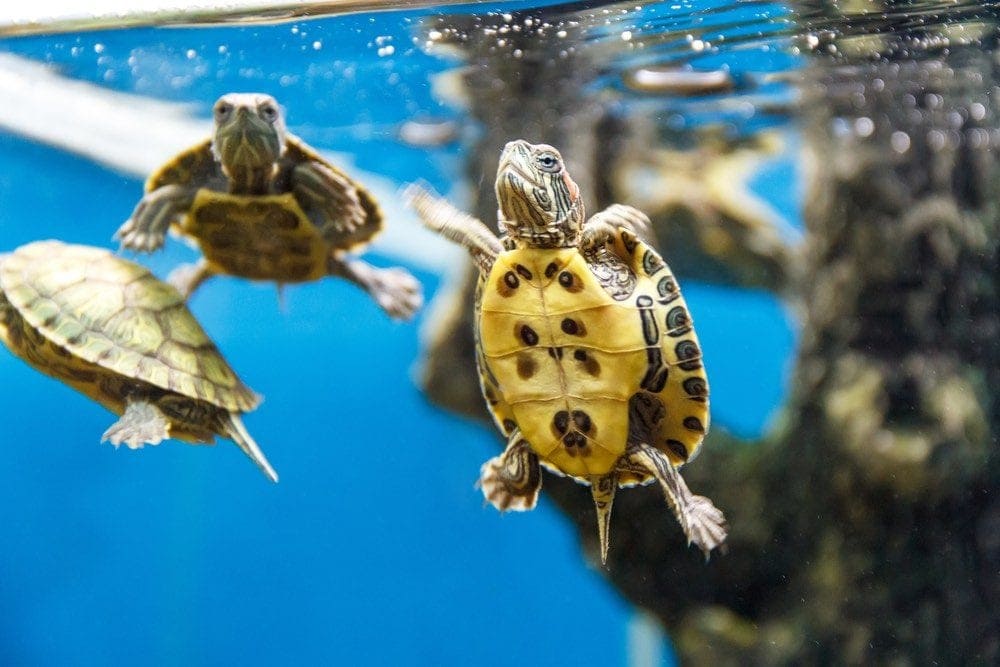
Creating the Ideal Turtle Habitat
Setting Up a Basking Area
Creating a proper basking area is vital for your turtle’s health. Turtles are ectothermic, meaning they rely on external heat sources to regulate their body temperature. A basking area typically consists of a platform or rock near a heat source like a heat lamp. This setup allows your turtle to climb out of the water and soak up some warmth. Make sure the platform is sturdy and large enough for your turtle to rest comfortably. Avoid slippery materials to prevent injuries.
Choosing the Right Heat Lamp
Choosing the right heat lamp is crucial for maintaining the ideal temperature in your turtle’s habitat. Heat lamps not only provide warmth but can also offer UV light, which is essential for your turtle’s well-being. When selecting a lamp, consider the size of the enclosure, the distance from the turtle, and the ambient room temperature. Adjust the wattage accordingly to maintain the recommended temperature gradient, which is around 85–95°F for the basking area and 75°F for the cooler end.
Importance of UVB Lighting
UVB lighting is a must-have for any turtle habitat. It helps turtles produce vitamin D3, necessary for calcium absorption. Without adequate UVB exposure, turtles can develop serious health issues like metabolic bone disease. Place a UVB light over the basking area to ensure your turtle gets enough exposure. Remember to replace the bulb every 6-12 months, as its effectiveness diminishes over time.
Maintaining a balanced habitat with proper basking and UVB lighting ensures your turtle thrives in a comfortable environment. Regularly monitor and adjust these elements to keep your pet happy and healthy.
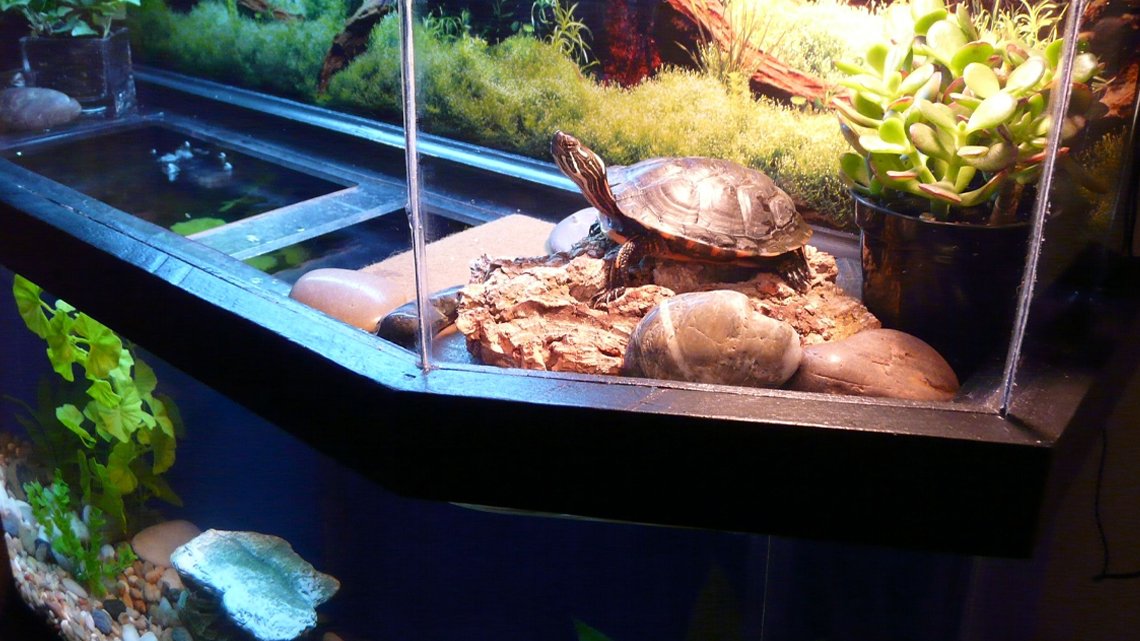
For more on creating an ideal habitat, including a spacious aquarium and filtration system, check out our guide on turtle care.
Maintaining Optimal Water Temperature
Types of Turtle Water Heaters
Keeping your turtle’s water at the right temperature is key for their health. There are several types of water heaters you can use:
- Submersible Heaters: These are placed directly in the water and are great for maintaining consistent temperatures.
- Inline Heaters: Installed outside of the tank, these work well for larger setups.
- Substrate Heaters: Positioned under the tank, these are less common but can be useful for bottom-dwelling species.
Each type has its benefits, so consider your turtle’s specific needs and your tank setup when choosing a heater.
Steps to Install a Water Heater
Setting up a water heater isn’t too tricky, but you want to get it right to keep your turtle comfy.
- Choose the Right Heater: Pick a heater that’s suitable for your tank size and turtle species.
- Position the Heater: Place it where water flow is good to distribute heat evenly.
- Secure the Heater: Use suction cups or clips to keep it in place.
- Adjust the Temperature: Set the thermostat to the desired temperature, typically between 75°F and 80°F.
- Monitor Regularly: Keep an eye on the temperature to ensure it stays consistent.
A properly installed heater keeps your turtle’s environment stable and healthy.
Monitoring Water Temperature
Keeping tabs on the water temperature is crucial. A stable temperature ensures your turtle stays healthy and active. Here’s how you can monitor it effectively:
- Use a reliable thermometer designed for aquatic environments.
- Check the temperature daily and adjust the heater as needed.
- Consider using a thermostat to automate temperature control.
Consistent monitoring helps prevent stress and health issues related to temperature fluctuations.
By maintaining the right water temperature, you create a comfortable and safe habitat for your turtle. For more information on caring for turtles, including habitat setup and maintenance, make sure to explore comprehensive guides and resources.
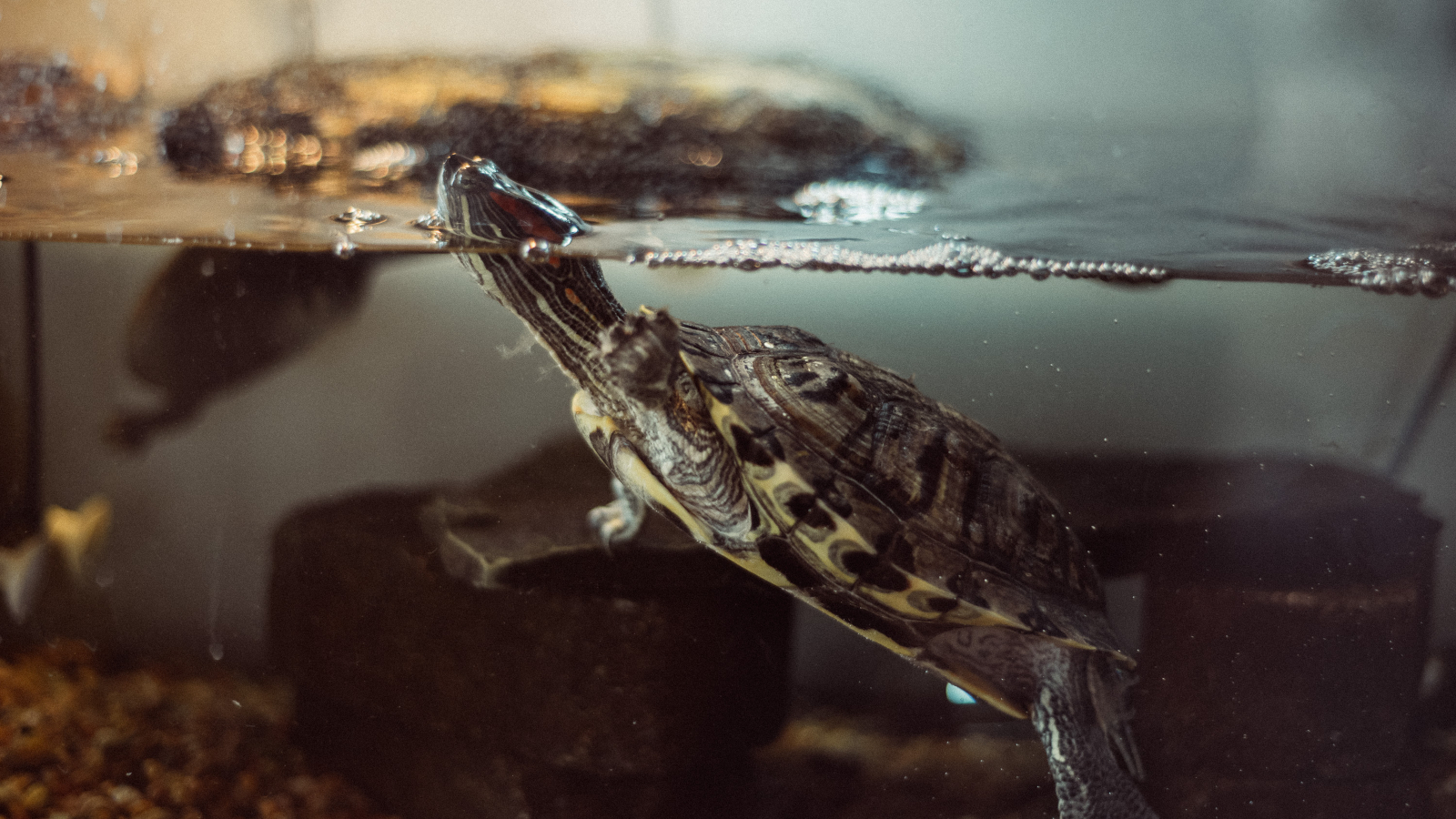
Troubleshooting Temperature Issues
Common Temperature Challenges
Maintaining the right temperature in a turtle’s habitat can sometimes feel like a juggling act. Here are some common issues you might face:
- Inconsistent Temperatures: If the temperature in your turtle’s tank is all over the place, consider using a thermostat. This handy device can help keep things stable, ensuring your turtle stays comfy.
- Overheating: If things get too toasty in the tank, make sure there’s good ventilation. You might also think about adding a cooling fan or some extra shade for your turtle to escape the heat.
- Cold Spots: If certain areas of the tank are consistently chilly, try adding more heat sources like heating pads or ceramic heaters to warm things up.
Adjusting Heat Sources
Adjusting heat sources is key to keeping your turtle’s habitat just right. If the temperature is too low, you might need to tweak the position or wattage of the heat lamp. Moving the lamp closer or upping the wattage can help raise the temperature. On the flip side, if it’s too hot, try adjusting the lamp’s position or wattage to cool things down. It’s all about finding that sweet spot.
Using Thermostats for Stability
Thermostats are a game-changer for maintaining a stable environment. They automatically adjust the heat output to keep the temperature just right, so you don’t have to constantly check and tweak things yourself. This not only keeps your turtle happy but also helps prevent any nasty surprises like overheating or chilling. Investing in a good thermostat can make all the difference in creating an ideal turtle habitat.
Keeping your turtle’s environment at the right temperature isn’t just about comfort—it’s essential for their health and well-being. With the right tools and a bit of know-how, you can ensure your shelled friend thrives in their cozy home.
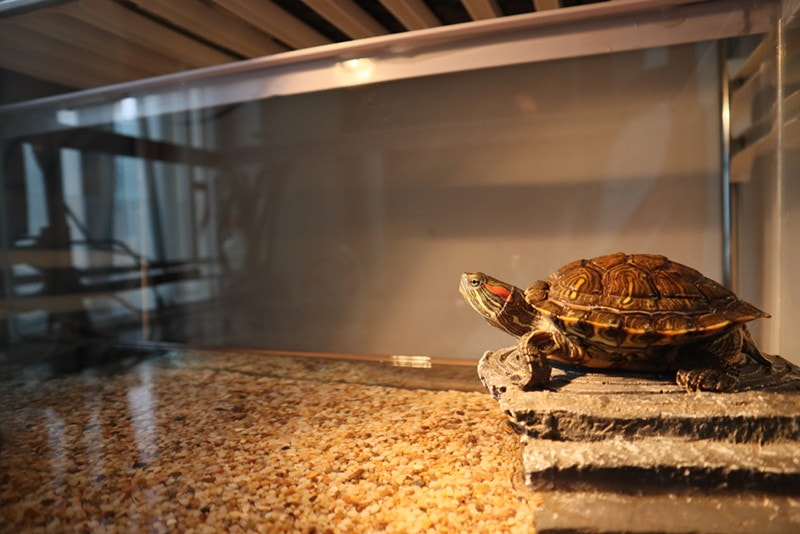
The Impact of Temperature on Turtle Behavior
Temperature and Turtle Activity Levels
Turtles are cold-blooded creatures, which means their activity levels are closely tied to the temperature of their environment. When temperatures drop, turtles become sluggish and less active. In colder conditions, they might even enter a state of brumation, similar to hibernation, where their metabolism slows down significantly. On the flip side, if it gets too hot, turtles can become stressed and overactive, leading to exhaustion and potential health issues. It’s like when you’re too hot or too cold; you just can’t function properly. Keeping the right balance is key.
Effects of Temperature on Digestion
Temperature plays a huge role in how turtles digest their food. If the environment is too cold, turtles might struggle to digest their meals, leading to undigested food sitting in their stomachs. This can cause bloating and discomfort, and over time, it might even lead to more serious health problems. On the other hand, a warm environment helps turtles digest their food efficiently. It’s like when you eat a heavy meal and then sit in the sun; everything just feels better and moves along smoothly.
Signs of Temperature Stress in Turtles
Turtles can show several signs if they’re stressed due to temperature issues. Watch out for these signs:
- Lethargy and lack of movement
- Refusal to eat
- Unusual swimming patterns or floating
If you notice any of these behaviors, it’s time to check the temperature in their habitat. Sometimes, a simple adjustment in the heat source can make a big difference.
Creating the right environment for your turtle is more than just setting up a tank; it’s about understanding their needs and making sure they have a comfortable place to live. If you’re interested in more about turtle care, including their social interactions and basking habits, check out our guide on turtle care.
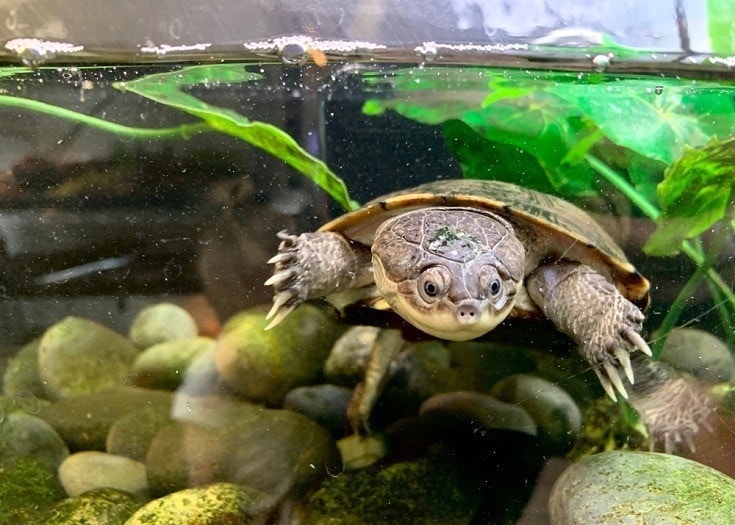
Choosing the Right Equipment for Temperature Control
Factors to Consider When Selecting Heat Lamps
Picking the right heat lamp for your turtle isn’t just about grabbing the first one you see. You need to think about the size of your turtle’s tank, the species you have, and the climate in your home. For example, larger tanks may require more powerful lamps to ensure the whole area is adequately heated. Different species have varying needs, so research is key. Also, consider if your home gets particularly cold or hot, as this will impact the lamp’s efficiency.
Here’s a quick checklist to help you choose:
- Tank Size: Larger tanks need more powerful lamps.
- Species Requirements: Different turtles have different needs.
- Home Climate: Consider your home’s ambient temperature.
Benefits of Using Thermostats
Thermostats are the unsung heroes in a turtle habitat. They help maintain a steady temperature, which is crucial for your turtle’s health. With a thermostat, you can set the desired temperature, and it will automatically adjust the heat source to maintain this level. This not only ensures your turtle stays comfortable but also prevents overheating, which can be dangerous.
Using a thermostat is like having a personal assistant for your turtle’s habitat, ensuring the temperature is always just right.
Comparing Different Heating Solutions
When it comes to heating solutions, you have several options. Each has its pros and cons, depending on your setup and needs.
- Ceramic Heat Emitters: Great for nighttime as they don’t emit light, but they do need a thermostat.
- Radiant Heat Panels: Ideal for larger setups, these panels provide consistent heat from above.
- Heat Tapes and Cables: These can be used to create a gradient but must be outside the tank to prevent burns.
Here’s a simple table to compare:
| Heating Solution | Light Emission | Best Use Case |
|---|---|---|
| Ceramic Heat Emitters | No | Nighttime heating |
| Radiant Heat Panels | No | Large enclosures |
| Heat Tapes and Cables | No | Creating temperature gradients |

Remember, setting up a turtle tank goes beyond just picking the right heat source. It’s about creating a balanced environment that mimics their natural habitat.
Seasonal Temperature Adjustments for Turtles
Winter can be tough on turtles, especially those in outdoor ponds. As temperatures drop, it’s crucial to monitor and adjust the environment to keep your turtles healthy. Installing a reliable heater is essential to prevent the water from freezing. For those with a turtle pond, ensuring there’s a safe spot for hibernation is key. You might also want to consider adding insulation around the pond or tank to keep the chill out.
Dealing with Summer Heat
Summer brings its own set of challenges. As the mercury rises, turtles can overheat quickly. Keep an eye on water levels, as evaporation can happen faster than you’d think. Providing shade is a must—trees, plants, or even a simple tarp can do wonders. Regularly cleaning the pond or tank will also help maintain a healthy environment.
Adapting to Seasonal Changes
Turtles are quite adaptable, but they still need a little help when seasons change. Gradually adjust the temperatures in their habitat to mimic natural shifts. This can mean slowly turning down the heater as spring approaches or ramping it up as fall sets in. A consistent routine will help your turtle adjust smoothly to changes in their environment.
Adjusting your turtle’s habitat with the seasons is all about balance. It’s a little bit of science and a lot of care, ensuring they stay comfortable year-round.
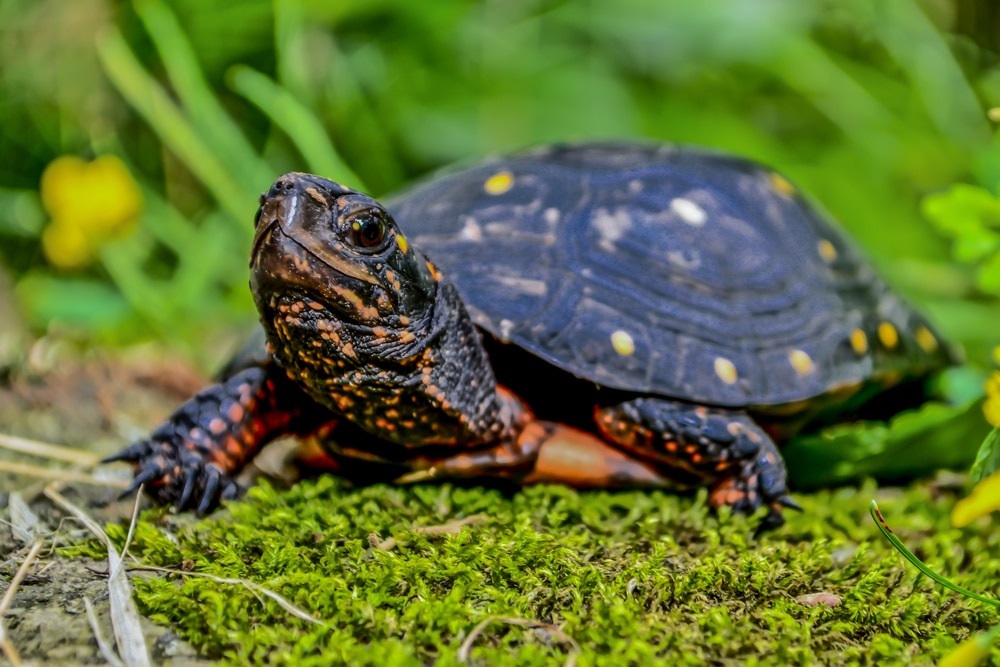
Conclusion
So, there you have it, folks! Keeping your turtle’s home at the right temperature is super important. It’s not just about comfort—it’s about their health and happiness. Whether it’s making sure the water is just right or setting up a cozy basking spot, every little detail counts. Remember, turtles can’t tell us when they’re too hot or too cold, so it’s up to us to keep an eye on things. With the right setup, your shelled buddy will be living their best life. And hey, a happy turtle means a happy pet owner, right? So, let’s get those habitats perfect and watch our turtles thrive!
Frequently Asked Questions
Why is temperature important for turtles?
Temperature is crucial for turtles because it affects their digestion, metabolism, and overall health. Keeping the right temperature helps turtles stay active and healthy.
What happens if my turtle gets too hot?
If your turtle gets too hot, it can become stressed and dehydrated, which might lead to heatstroke. It’s important to regularly check the temperature in their habitat to keep it safe.
How can I tell if my turtle is too cold?
A turtle that’s too cold may be sluggish and not eat well. It might also spend a lot of time under the heat lamp trying to warm up.
Do all turtles need the same temperature?
No, different turtle species have different temperature needs. It’s important to know the specific needs of your turtle’s species to keep them comfortable.
Why do turtles need a basking area?
A basking area lets turtles warm up and dry off, which is important for their health. It helps them regulate their body temperature and prevents shell problems.
What’s the role of UVB lighting for turtles?
UVB lighting helps turtles produce vitamin D3, which is necessary for absorbing calcium. Without it, turtles can develop shell deformities and other health problems.







